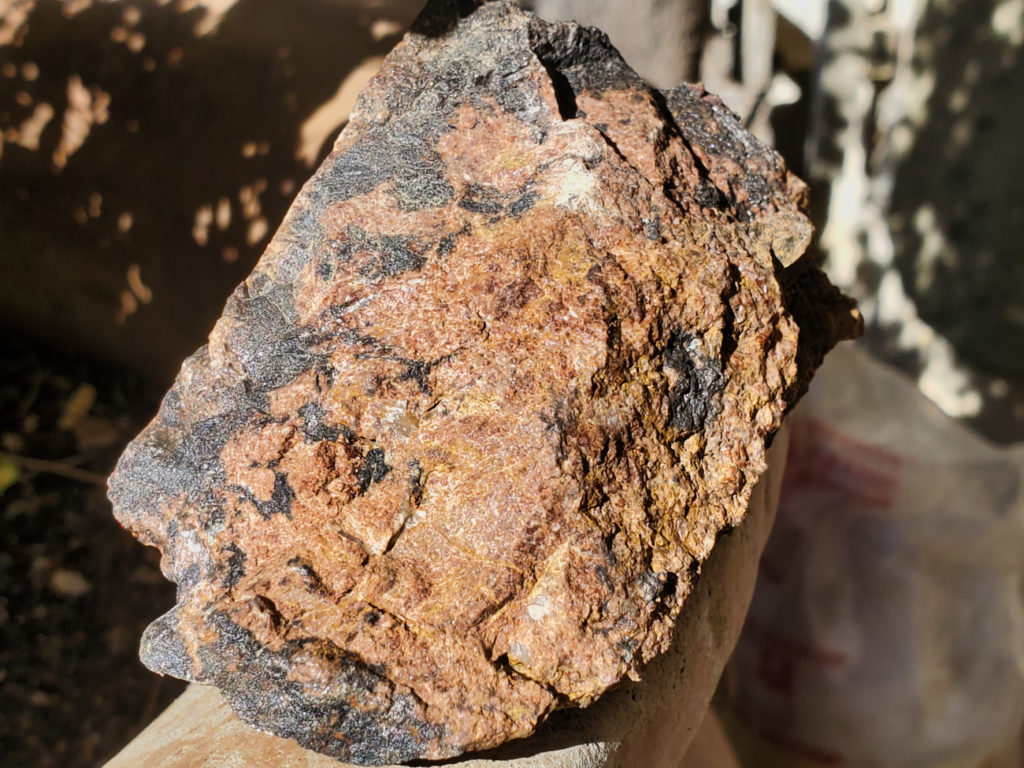Update 7/8/21:
We’ve received the Raman spectrometer confirmation that the lavender mineral is rhodonite. Big thanks to Bob Housley and George Rossman for continuing support of the collecting community at the Caltech lab!
Hi, fieldtrip friends!
After a long break that felt like forever, the group went on a hunt for some manganese minerals, including elusive rhodonite.
We’ve met at 9:30 AM, Saturday, March 20th, at the intersection of US 395 and Osdick Rd in Randsburg, 129 miles north of Pasadena. The weather forecast was favorable until just the day before the trip. Instead of a warm sunny day, we’ve got a cold windy sunny day. Despite the weather, the turnout was quite good for a trip during the pandemic — several cars and over 10 people including two new members. The updated COVID-19 signup sheet now included the vaccination some people already received in full. We’ve filled out our signup sheets while waiting for some stragglers and learning that many people did not have a chance to go collecting since the last trip in October. Once everybody arrived and signed up we headed for the mine dumps.
On the way, we saw the walls of open pits and ever-growing tailing piles in the distance. It was the reminder of the relatively new gold and silver mining activity that restarted a decade ago. It also shows that the rocks under Randsburg still hold a lot of treasures. Unfortunately, the tailing piles covered up some of the prime spots to collect rhodonite in the past.
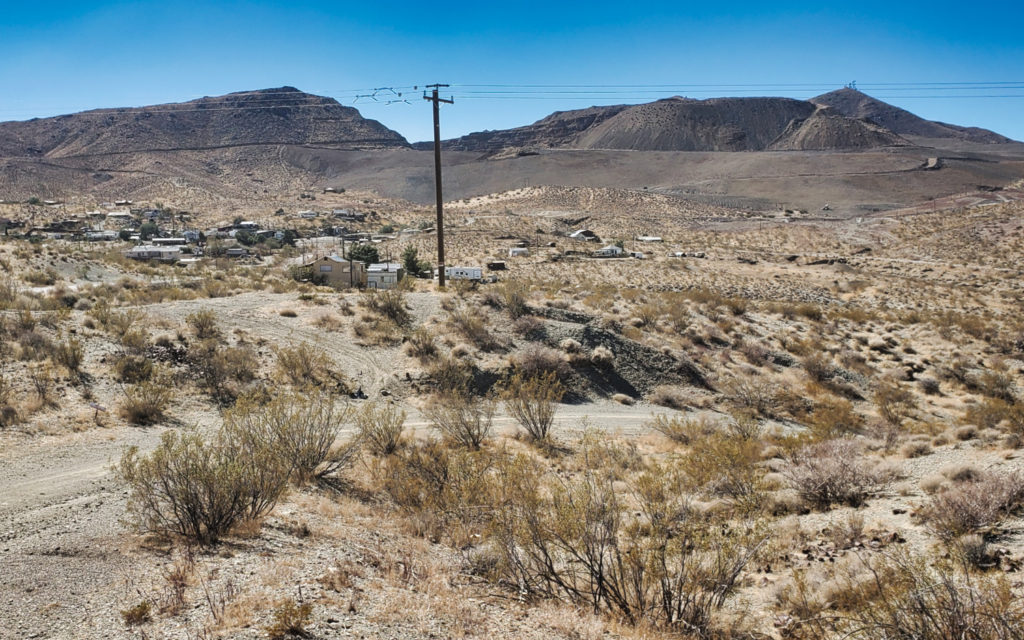
Some of the roads got reclaimed or redirected during the new mine fence installation several years ago. The desert roads on Google maps were out of date, for example, the part of road R83 connecting to road R85 is not even there, so I had to rely on the waypoint map I made during the scouting trip and the satellite map. Some road segments were nice and flat allowing for some acceleration, but there were some nasty rough bumps and a few sandy areas on the way to the destination, so medium to high clearance and 4WD were a must.
We parked on the side of the dirt road R83 and headed out on foot to the manganese tranches. On the way, we passed the Big Indian mine dump. We collected some serpentine-looking material on the dumps. Few pieces were showing transparent gem green layers, possibly antigorite.
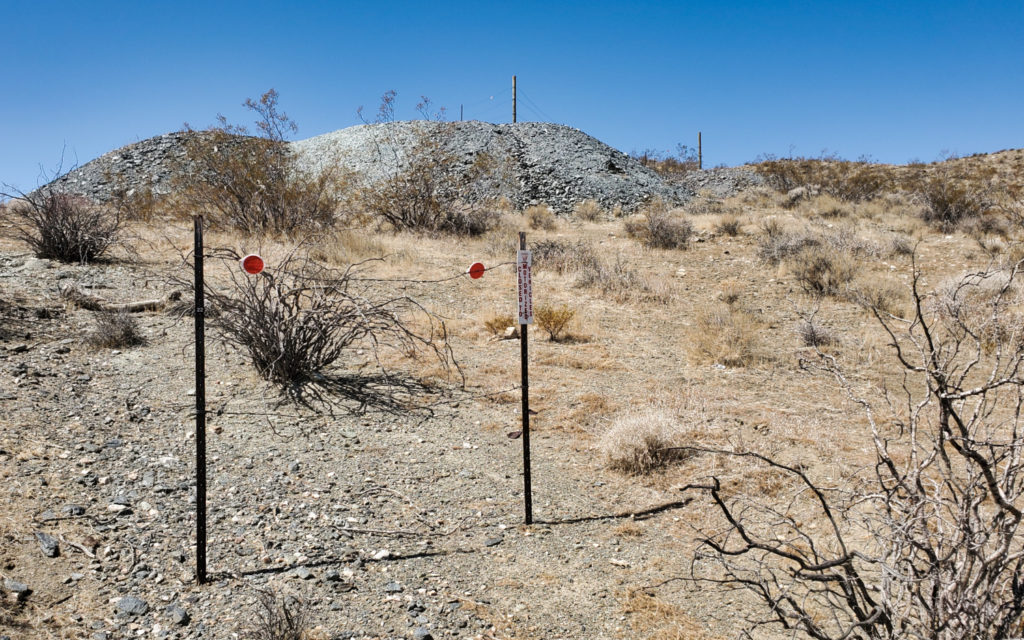
For about an hour everybody was collecting material similar to what I found during scouting — shiny black manganese oxides, milky quartz, and light to dark reddish-brown garnet masses, which I believe is the manganese aluminum garnet, spessartine, but it will need to be verified to be sure. Some of it is gemmy red crystals, up to a couple of mm in size. A few pieces showed well-defined shiny black platelets of an Mn oxide mineral, 1-2 cm long. Some of us found some more of the pearly gray and tan platelets and needles, possibly a manganese amphibole. It could be one of the minerals previously reported from the area like anthophyllite, stilpnomelane, tephroite, or clino-suenoite. Of course, the identity needs to be verified.
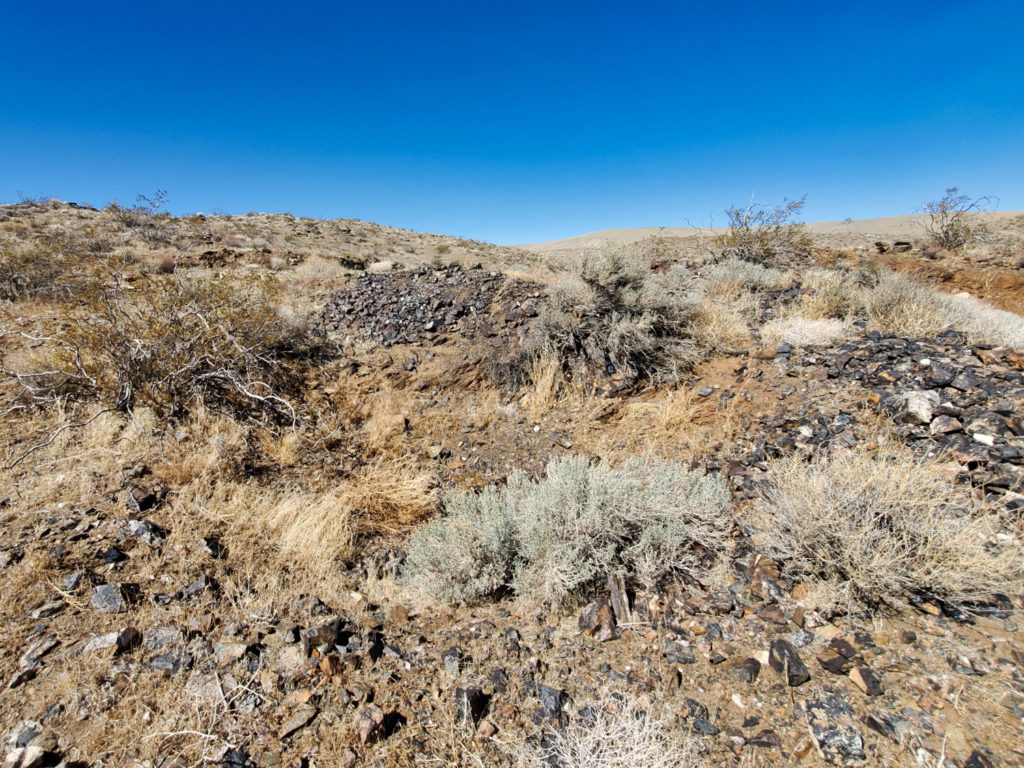
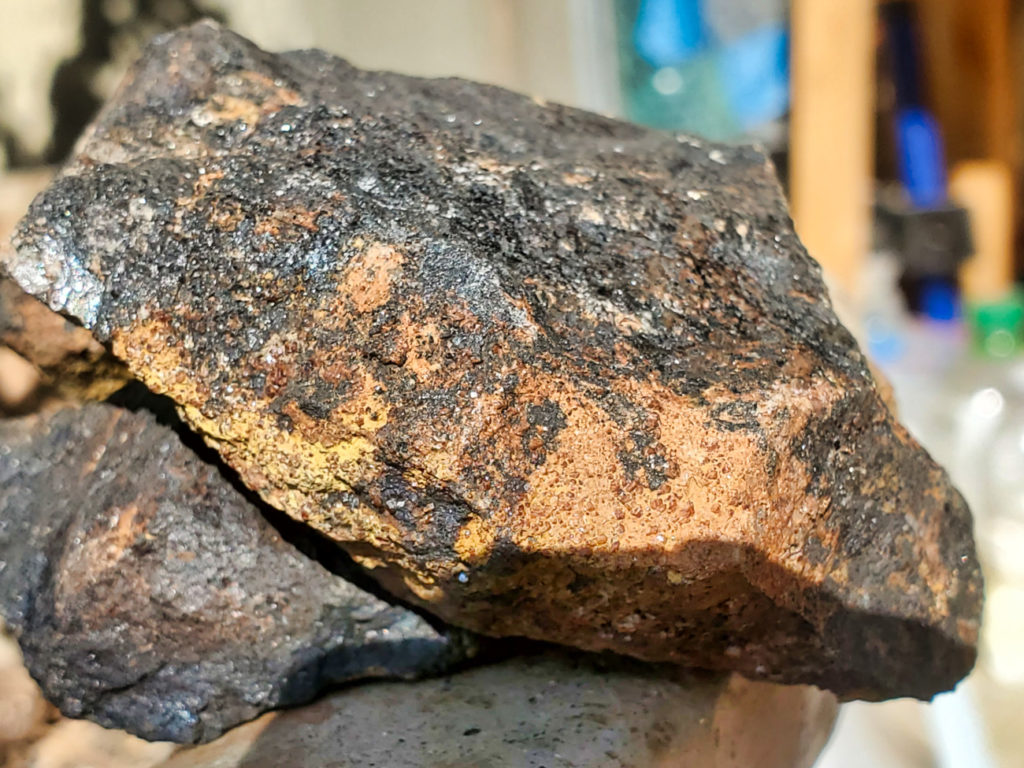
Right then the two new members first brought to my attention a sample with small lavender-colored spots in dark oxides. Other people started finding similar spots, the largest over 1 cm. It was not the pink lore of old days with vein pieces tens of centimeters across, but still, we’ve managed to rediscover the elusive mineral (pending the verification)!
The material does look like rhodonite and does not react with acid, so it’s not manganese carbonate. The identity needs to be investigated and the results will be posted here after the labs open their doors again.
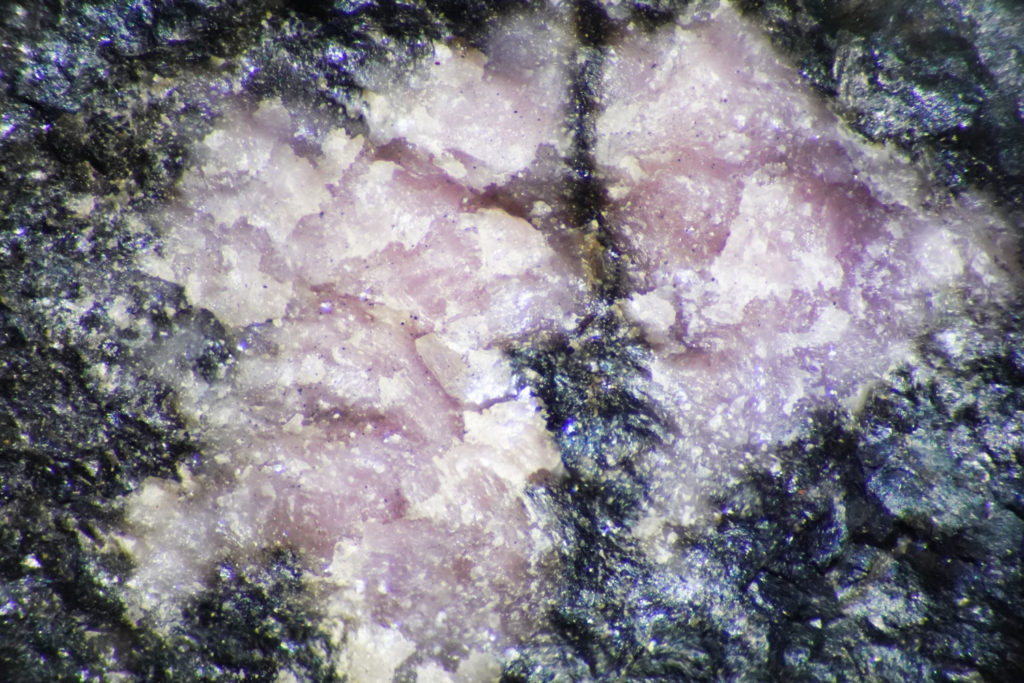
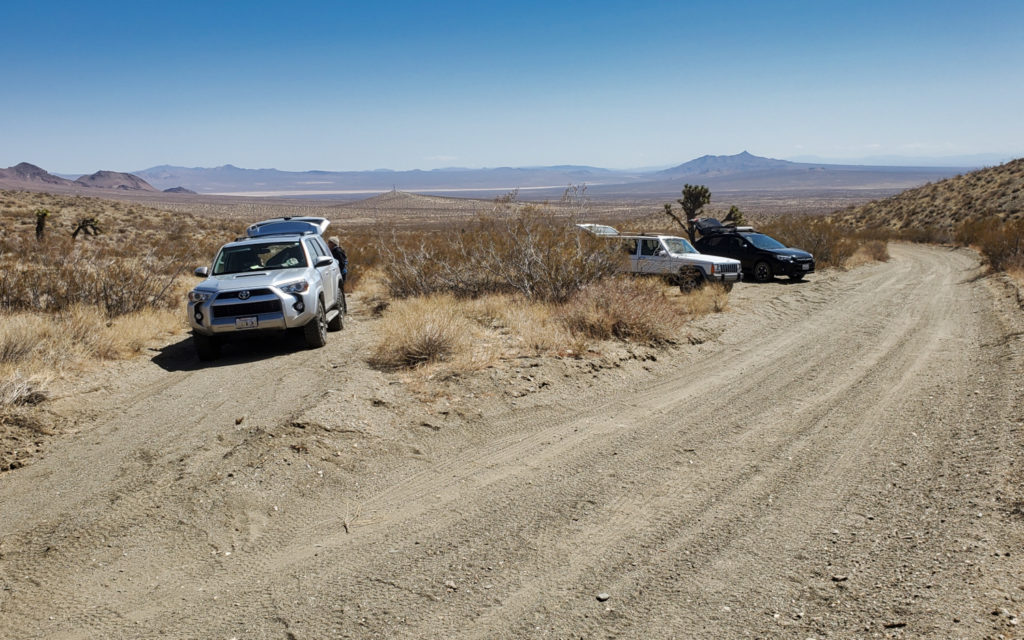
Thanks to everybody who decided to brave the cold wind and hope to see you all next time!
MarekC
